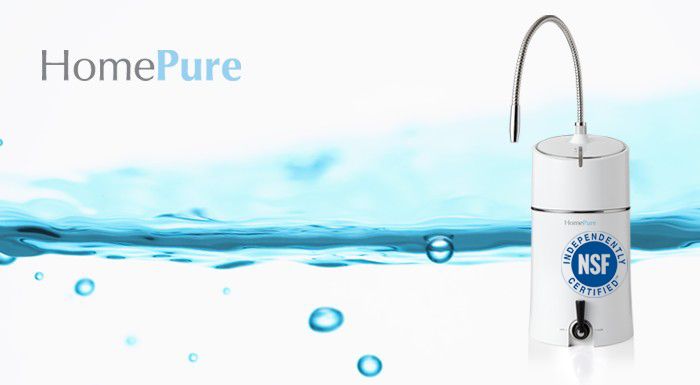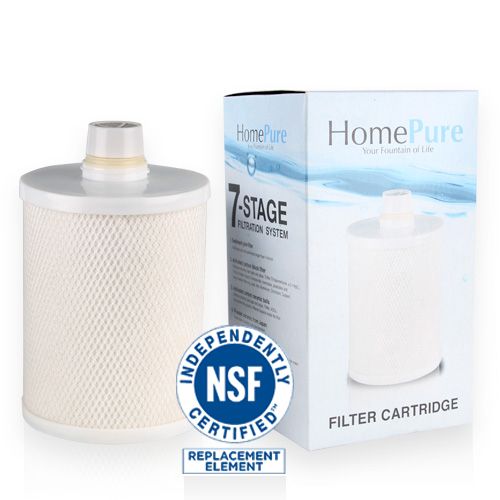The Importance of Good Water
Everybody knows water is essential to our survival. The Earth needs it, and we need it. Water is all around us and in us, but still, most take it for granted. When it comes to the biological function of water for humans, its importance is critical.
As water makes up more than two thirds of human body weight, humans would die without it in a few days. Water also plays an important role in the mechanics of the body. In fact, every cell and organ function in our anatomy and physiology depends on water to work efficiently and effectively.
Since water is such an important component to our physiology, it would make sense that the quality of water should be just as important as drinking eight glasses of water a day. Drinking water should always be clean and free of contaminants to ensure proper health and wellness.
Some examples of major contaminants found in water today:
Toxic Metals (Lead, Mercury, Copper, etc.)
Toxic metals are also called inorganic contaminants. Many toxic metals have been linked to long-term health problems such as cancer and serious learning disabilities.
Microbiological (E. Coli, Enterobacter, Klebsiella, Citrobacter, etc.)
Biological contaminants are living organisms such as parasites, bacteria, viruses, cysts, and spores.
Petrochemicals (Herbicides, Pesticides, Detergents, VOC, Carcinogens, etc.)
Petroleum-based chemicals are also called ‘organic’ contaminants. Many have been linked to long-term health problems including many forms of cancer. Most have unknown long-term health effects.
Why Do We Need Water Purification?
Water on the Earth’s surface is substantially more prone to contaminants due to heavy industrial and environmental pollution. People who may be exposed to these inorganic contaminants can become sick or susceptible to liver damage, cancer and other long-term health conditions. Organic contaminants such as bacteria, disease-carrying microorganisms, rotten plants, and animal droppings are also likely to affect water sources. We have arguably, and depending where we are, reached the point where all sources of our drinking water contain some level of contamination.
With knowledge thus comes choice. A good filtration system installed in your home is one important way to proactively monitor and ensure the quality and safety of your drinking water. And although water purification technology for households now prevalently exists, many people are unaware of the working principle behind the various filtration systems. The first thing to keep in mind is that a purifying method cannot find its application in a single filtration stage. Only a good complete system can produce high-quality, safe drinking water.
Everybody knows water is essential to our survival. The Earth needs it, and we need it. Water is all around us and in us, but still, most take it for granted. When it comes to the biological function of water for humans, its importance is critical.
As water makes up more than two thirds of human body weight, humans would die without it in a few days. Water also plays an important role in the mechanics of the body. In fact, every cell and organ function in our anatomy and physiology depends on water to work efficiently and effectively.
Since water is such an important component to our physiology, it would make sense that the quality of water should be just as important as drinking eight glasses of water a day. Drinking water should always be clean and free of contaminants to ensure proper health and wellness.
Some examples of major contaminants found in water today:
Toxic Metals (Lead, Mercury, Copper, etc.)
Toxic metals are also called inorganic contaminants. Many toxic metals have been linked to long-term health problems such as cancer and serious learning disabilities.
Microbiological (E. Coli, Enterobacter, Klebsiella, Citrobacter, etc.)
Biological contaminants are living organisms such as parasites, bacteria, viruses, cysts, and spores.
Petrochemicals (Herbicides, Pesticides, Detergents, VOC, Carcinogens, etc.)
Petroleum-based chemicals are also called ‘organic’ contaminants. Many have been linked to long-term health problems including many forms of cancer. Most have unknown long-term health effects.
Why Do We Need Water Purification?
Water on the Earth’s surface is substantially more prone to contaminants due to heavy industrial and environmental pollution. People who may be exposed to these inorganic contaminants can become sick or susceptible to liver damage, cancer and other long-term health conditions. Organic contaminants such as bacteria, disease-carrying microorganisms, rotten plants, and animal droppings are also likely to affect water sources. We have arguably, and depending where we are, reached the point where all sources of our drinking water contain some level of contamination.
With knowledge thus comes choice. A good filtration system installed in your home is one important way to proactively monitor and ensure the quality and safety of your drinking water. And although water purification technology for households now prevalently exists, many people are unaware of the working principle behind the various filtration systems. The first thing to keep in mind is that a purifying method cannot find its application in a single filtration stage. Only a good complete system can produce high-quality, safe drinking water.

RM2490
7-Stage Filtration System:
1. Sediment pre-filter
Made of PE net and two-layered non-woven fabric material, the pre-filter effectively filters suspended solids such as rust residues, mud, and sand larger than 5 µm (5/1000 mm).
Function: Removes rust and sediments larger than 5 micron
2. Activated carbon block filter
The HomePure carbon block filter with developed technology provides greater chemical absorption and mechanical filtration. The HomePure carbon block also comprises a larger filter surface area, which is more efficient than a Granulated Activated Carbon (GAC) filter, thus providing better absorption of contaminants.
Function: Removes 97% of chlorine, 99% of turbidity, 99% of the total 46 types of VOC (Volatile Organic Compounds), TTHM (Trihalomethane ≤ 0.1mg/L) and/or the other chemicals in Table 17 of NSF 53 (refer to User Manual)
3. Activated carbon ceramic balls
Function: Removes 97% of chlorine, 99% of turbidity, 99% of the total 46 types of VOC (Volatile Organic Compounds), TTHM (Trihalomethane ≤ 0.1mg/L) and/or the other chemicals in Table 17 of NSF 53 (refer to User Manual)
3. Activated carbon ceramic balls
The carbon ceramic balls are made as special coating balls at a low-temperature process under very technical and delicate methods to keep all the benefits functioning inside. The balls are responsible for improving the taste of your water, promoting excellent absorption and deodorisation.
Function: Remove 97% of chlorine, 99% of turbidity, 99% of the total 46 types of VOC (Volatile Organic Compounds), TTHM (Trihalomethane ≤ 0.1mg/L) and/or the other chemicals in Table 17 of NSF 53 (refer to User Manual); reduce bad taste and odour
4. Pi-water ceramic from Japan
The Pi-water ceramic neutralises the adverse effects of active oxygen, preventing the action of hazardous ions, and controlling the oxidation reduction reaction.
The Pi-water ceramic neutralises the adverse effects of active oxygen, preventing the action of hazardous ions, and controlling the oxidation reduction reaction.
Function: Suppresses oxidation and disintegration
5. Tourmaline ceramic balls
The tourmaline ceramic balls reduce water clustering and have antibacterial and deodorising qualities to better purify water. These help give water a good taste and are a good source of mineral microelements that are beneficial for wellness.
Function: Reduce water clustering; antibacterial; deodorise; ionise and alkalise water
6. Ultrafiltration hollow fibre membrane
As the size of the smallest bacteria is 0.2 to 0.3 micron (a hair size is around 70-140 micron), the HomePure Ultrafiltration (UF) membrane ensures elimination of bacteria due to its hollow fiber membrane having a pore size ranging from 0.01 to 0.1 micron. Microscopic impurities are likewise filtered out. However, the UF membrane allows the passing through of beneficial water minerals.
Function: Removes 100% of total coliform and E.Coli; reduces bacteria and microscopic impurities
7. Antibacterial Silver-lite stone
Made of inorganic compound materials, the antibacterial Silver-lite stone is effective in preventing bacteria and algae growth due to its Silver ions (Ag+) that move throughout the filter. Hence, the remaining water in the filter does not become contaminated and bacteria is prevented from re-entering the filter.
Function: Antibacterial; cleans water; prevents algae growth
Homepure Cartridge

RM486
